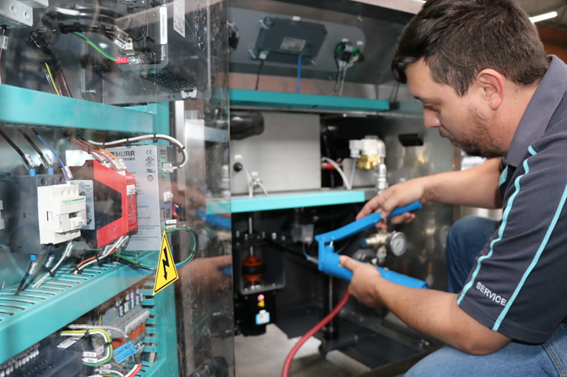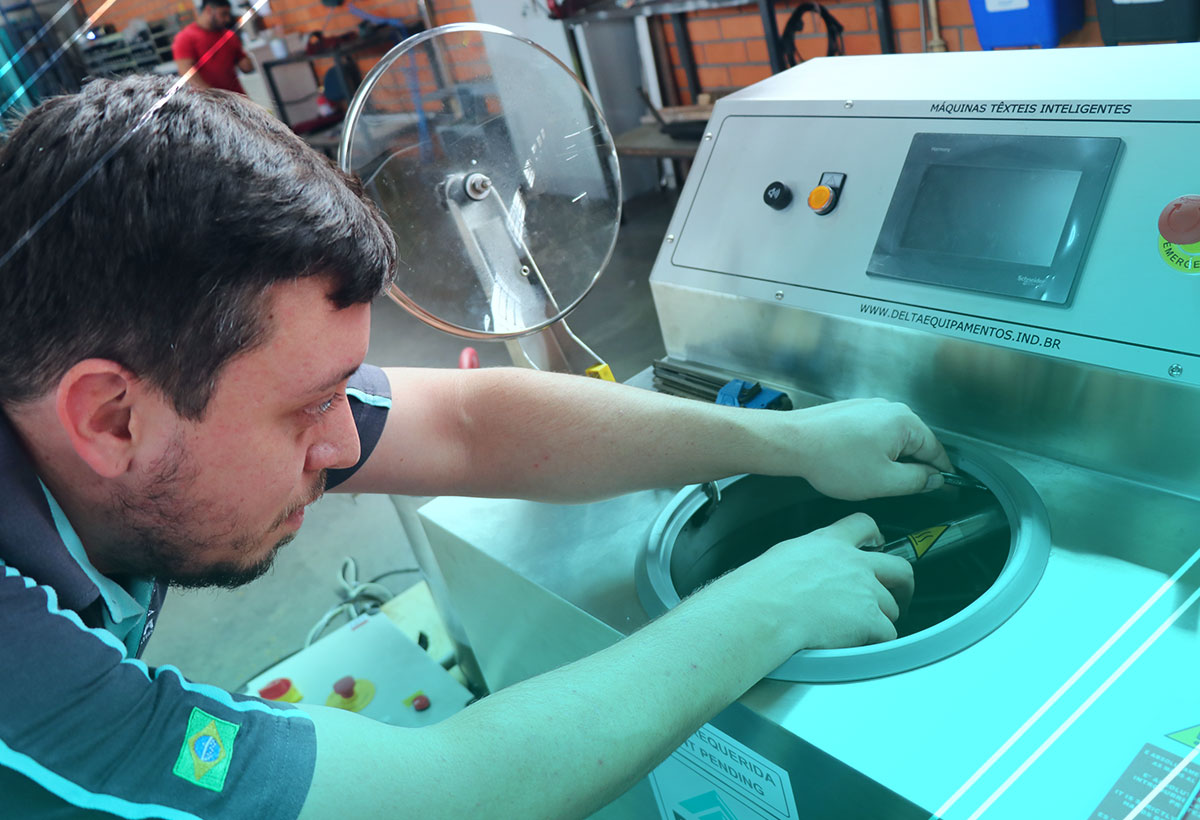The maintenance sector plays a fundamental role in increasing the productivity and profitability of textile production factories by assisting in process optimization, cost reduction, and machine care.
A good production cycle contributes to executing processes more efficiently, eliminating possible bottlenecks, risks, and losses. Thus, investing in technology and innovation through more productive equipment and processes assists in various sectors.
In this article, learn about how the maintenance sector offers improvements for textile production.
The maintenance sector in a textile factory
those responsible for maintenance sector of a textile factory are always attentive to the production line, aiming to take care of the equipment, maintenance and prevention of risks or possible factors that could cause failures during the process.
Every piece of equipment requires maintenance; therefore, the sector aims to care not only for the machinery but also for the processes involving production, safety, operation, among others.
See some types of maintenance:
- Predictive
Predictive maintenance is associated with maintenance activities that require a preventive scenario of the physical aspects of operations. It is in this context that damage and failure prevention are seen.
It is essential in industry 4.0,directly contributing to factory operational issues, costs, errors and flow delays.
- Preventative
A preventive maintenance is considered essential in prevention planning. This type of prevention is carried out with the scheduled and planned verification of activities in order to cause less impact on day-to-day production.
With this, it is possible to make choices and strategies that will ensure production runs with minimal interruptions, increasing productivity and improving deliveries.
- Corrective
Corrective maintenance is that carried out after the occurrence of a failure, aimed at returning an item to a condition to perform a required function.
It is the most expensive type of maintenance, which takes the most time and brings the most loss to the company.
It is important that the textile factory has in its maintenance sector the three main ways of preventing problems, making the factory more productive, proactive and preventive of possible failures.
How important is the maintenance sector to the industry?

O maintenance sector It is one of the most important sectors for defining productivity. Maintenance, cleaning, supervision, and part revisions will be the foundation to determine whether the textile factory will have good productivity or not, which will generate a positive or negative impact on all other sectors.
It is important to establish operational planning so that the industry has good conditions, following quality protocols and safety laws.
Thus, when a company opts for more modern and innovative machines, it can shorten maintenance time, as well as offer more long-term savings and safety for employees.
On the same front, it is worth remembering that it is important to monitor productivity rates, costs, workflow, safety, among other fundamental factors to avoid unforeseen events and risks to employees.
Another aspect within this scenario that can be affected is the economic one, where through adopted maintenance policies, it is possible to achieve a considerable reduction in costs, both operational and maintenance.
In this way, we can conclude that the maintenance sector plays a significant role in the challenges of production and quality in a textile industry.
But do you know the risks of not investing in new technologies to optimize production and maintenance? Let’s take a closer look next.
What damages can old machines cause to the textile industry?
Now that you’ve seen the benefits of investing in new machines, it’s important to know that maintaining old machinery can cause many losses. Therefore, we must pay attention to not only considering investment in new technologies, but also understanding why the old machines can harm your production.
Among many factors, one of the main negative impacts we can mention is production bottlenecks that can occur due to operational deficits and lack of resources, delaying demands and deliveries.
In addition to causing the process to stall, outdated machines can compromise delivery demands, resulting in losses and production damages, affecting even the credibility of the industry.
There are still other harmful factors, such as unplanned downtime due to a problem with the machine, directly affecting the production line.
How to solve? See below.
Invest in modern and innovative machines
The advancement of technology has made innovation increasingly present in various markets, and in the textile sector, it was no different. The innovation present in modern machines brings operators better features, more flexibility, and longer equipment lifespan.
Investing in technology is investing in the growth of your business.
Thus, besides optimizing processes through technology, factories have excellent cost-effectiveness, as investment in new machines increases their lifespan, reducing maintenance costs.
Standardizing processes with machinery and equipment allows for greater connectivity in the textile factory, leading to increased interactivity.
All these integrated factors help increase profitability, ensuring a return on investment in the machines.
How to Increase Productivity in the Textile Sector?
Increaseproductivity is the objective of many managers in the textile sector, as production efficiency is directly linked to cost reduction.
Thus, besides what we have seen before, it is also essential to invest in team training and process management.
Here are some tips:
- Be aware of market news;
- Make good preventative maintenance planning;
- Invest in technology;
- Optimize processes;
- Invest in modern machines.
Remember that investing in new technologies is not just buying new equipment, but improving processes through optimization, offering greater safety and operational quality, agreeing with the standards and laws required by safety regulatory bodies.
To understand better, read our infographic and discover 8 essential KPIs for measuring textile productivity!Click here or on the image below to download:
Delta textile machines: more efficiency for your industry
A Delta Máquinas Têxteis is a reference company in the market that aims for innovation, quality and high technology, offering machines that will meet your demands effectively, generating less maintenance costs and risks.
Our company is focused on the development of machines, automation, consultancy, to provide more efficiency in the production of the national and international Textile Industry.
Discover our equipment and request a budget.




